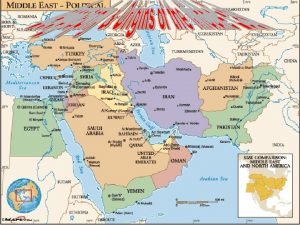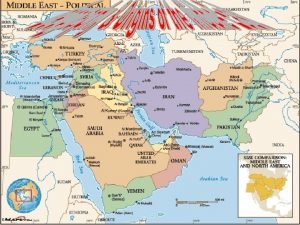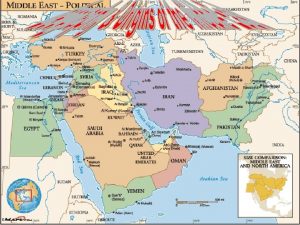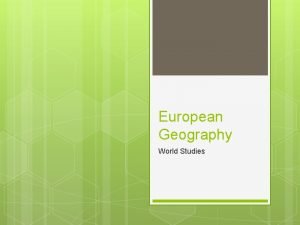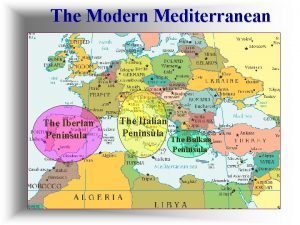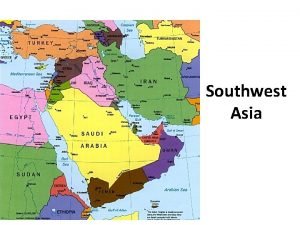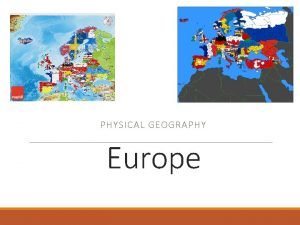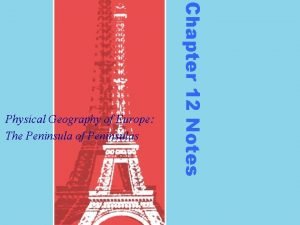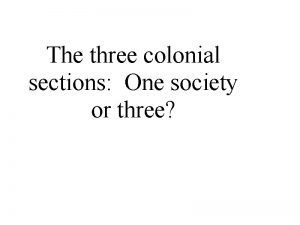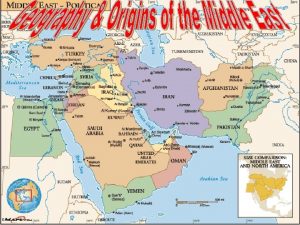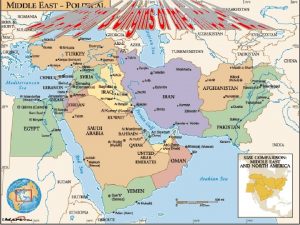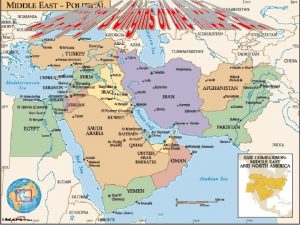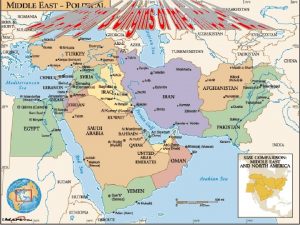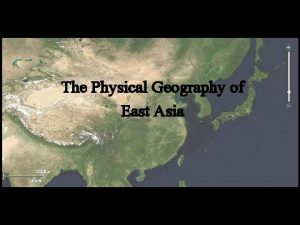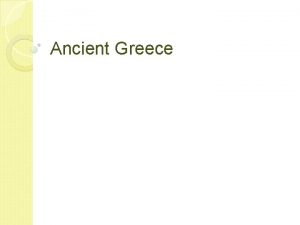Section One Geography There are three peninsulas in











- Slides: 11


Section One - Geography There are three peninsulas in the area – Arabian, Arabian Anatolia, & Sinai Peninsula – a piece of land surrounded by water on three sides. The Sinai Peninsula is separated from Africa by the Suez Canal, which was dug in 1868. A large body of water called the Dead Sea is one of the saltiest bodies of water on Earth Salt and other minerals have collected in it because it has no rivers running through it to make the water fresh The Dead Sea is more than a thousand feet below sea level. Nothing but bacteria lives here.

Most of the Arabian Peninsula is made up of the Arabian Desert An area in the south called the Empty Quarter is the largest sand desert in the world. Water is very hard to find and is very valuable. The little water in the desert is found at oases. Oases – a place in a desert where water is available near the surface. The most fertile land in the Middle East is found along the Tigris and Euphrates River in modern Iraq. The Middle East is home to some of the worlds earliest civilizations. Europe and Asia meet at Istanbul, Turkey, which is located on both sides of the Bosporus strait. Strait – a narrow channel connecting two bodies of water

The rivers of Southwest Asia (Middle East) are important because much of this region of the world is dry and desert or semi-desert. One of the longest rivers in the region is the Euphrates River, which begins in Turkey, and flows through Syria and Iraq. In southern Iraq, the Euphrates River joins with the Tigers River to form one waterway called the Shaat al-Arab, which then flows along the border between Kuwait and Iran before emptying into the Persian Gulf.

Tigris River The Tigris River begins in the mountains of Turkey and flows south through Iraq. It joins the Euphrates in southern Iraq. These two rivers provide water for both drinking and farming. The countries that share these rivers have had problems over how the water will be shared among them.

Persian Gulf The Persian Gulf is one of the main ways oil is shipped from the rich fields of Kuwait, Saudi Arabia, Iran, and other countries that line its shores. All of the countries that produce oil in that region depend on the Persian Gulf as a shipping route. Any ships coming out of or into the Persian Gulf must navigate through the very narrow Strait of Hormuz, located at one end of the Persian Gulf. This waterway connects the Persian Gulf to the Arabian Sea.

Suez Canal Once in the Arabian Sea, ships can sail east into the Red Sea, which is bordered by Saudi Arabia to the east and Egypt to the west. At the northern end of the Red Sea, ships can enter the man-made Suez Canal, which will allow then to get to the Mediterranean Sea without having to sail all around the continent of Africa.

Jordan River The Jordan River is a much smaller river than either the Tigris or the Euphrates, but it is still very important. The waters that form the Jordan River began in the mountains of Lebanon and Syria and flow down into the Hula Valley in northern Israel before reaching the Sea of Galilee. The Jordan River begins at the southern end of the Sea of Galilee and flows south until it reaches the Dead Sea. This river is one of the main sources of water for Israel, Jordan, parts of Syria, and many of those living in the West Bank and the Gaza Strip.

The Dead Sea Because so much water is taken out of the Jordan River by the different groups that depend on it, less and less water reaches the Dead Sea. The Dead Sea has no outlets. Water that flows in stays there and because so much evaporates in the desert air, the water remaining is high in salts and other chemicals. There are no fish living in the Dead Sea, and that is the reason for its name. The Jordan River is also important because it is the political boundary

Deserts The Middle East has a number of very large deserts areas: the Syrian Desert shared between Syria and Iraq, and the Rub al-Khali, or “ empty Quarter, ” in southern Saudi Arabia. These deserts have historically provided the Middle East with natural barriers against invasion. They have also led to a way of life that developed around the need to survive in such harsh surroundings. Some people have always managed to live in and around the desert, living in tent camps and surviving as sheep and camel herders and making a living by trading animals and handmade goods with those who lived in the towns on the desert’s edge. These people are known as “Bedouins, ” or desert

Climate The countries of the Middle East generally have a very hot and dry climate. The climate is the type of weather a region has over a very long period. Four large oceans or bodies of water, the Mediterranean Sea, the Red Sea, the Arabian Gulf, and the Indian Ocean border the Middle East. Even so, mountain ranges close to many of the coastal areas block rains coming from these bodies of water and the result is that much of the interior of this region is desert. Because there are coastal areas as well as a number of large rivers, other parts of this region have enough
 Mikael ferm
Mikael ferm What are three peninsulas in the middle east
What are three peninsulas in the middle east What three peninsulas are in the middle east
What three peninsulas are in the middle east What three peninsulas are in the middle east
What three peninsulas are in the middle east Either my shoes or your coat (is, are) always on the floor.
Either my shoes or your coat (is, are) always on the floor. 5 major peninsulas of europe
5 major peninsulas of europe Iberian italian and balkan peninsulas
Iberian italian and balkan peninsulas Peninsulas and waterways in southwest asia
Peninsulas and waterways in southwest asia What are the 5 major peninsulas in europe
What are the 5 major peninsulas in europe Chapter 12 the peninsula of peninsulas
Chapter 12 the peninsula of peninsulas Once there were three little pigs
Once there were three little pigs The three colonial sections-one society or three
The three colonial sections-one society or three

